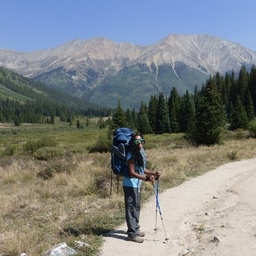
Carolyn Wilke
Freelance Journalist at Freelance
Curiosity and wonder journalist 📝 PhD | she/her, Indian American | Freelance - bylines @NYTScience @KnowableMag @sciam | 🧵 I sew stuff
Articles
-
2 weeks ago |
eos.org | Carolyn Wilke
The textbook explanation of how hailstones grow goes something like this: Nuclei collect frozen layers as they are repeatedly lofted up and fall through clouds. But scientists have had hints that this up-down cycle doesn’t always reflect real hailstones’ journeys. Now researchers have revived an old technique to track dozens of hailstones. The new results suggest that many hailstones take simpler paths.
-
1 month ago |
snexplores.org | Carolyn Wilke
astronaut: Someone trained to travel into space for research and exploration. colleague: Someone who works with another; a co-worker or team member. computer model: A program that runs on a computer that creates a model, or simulation, of a real-world feature, phenomenon or event. data: Facts and/or statistics collected together for analysis but not necessarily organized in a way that gives them meaning.
-
1 month ago |
eos.org | Carolyn Wilke
This is an authorized translation of an Eos article. Esta es una traducción al español autorizada de un artículo de Eos. Los castores construyen presas en los ríos. Las hormigas construyen montículos y excavan túneles. Los peces que buscan alimento desplazan partículas en los lechos de los ríos. El ganado doméstico compacta el suelo bajo sus pezuñas. Durante décadas, los investigadores han documentado las formas en que diversas especies modifican sus ambientes.
-
2 months ago |
cen.acs.org | Carolyn Wilke
When plants face drought, infections, and other stressors, their cells produce unstable molecules known as reactive oxygen species, including hydrogen peroxide. Snooping on a plant's production of hydrogen peroxide could reveal changes in stress levels that cue farmers to respond. A new microneedle-based patch that attaches directly to a plant leaf is able to rapidly measure hydrogen peroxide levels with the help of a biofriendly electrode ( ACS Sens. 2025, DOI: 10.1021/acssensors.4c02645).
-
2 months ago |
snexplores.org | Nikk Ogasa |Carolyn Wilke
aftershock: One or more smaller earthquakes which often follow a major earthquake. anaerobic: Occurring in the absence of oxygen. Anaerobic reactions take place in oxygen-free locations. bedrock: The thick, solid rock layer that underlies the soil and other broken, rocky materials on Earth’s surface. earthquake: A sudden and sometimes violent shaking of the ground, sometimes causing great destruction, as a result of movements within Earth’s crust or of volcanic action.
Try JournoFinder For Free
Search and contact over 1M+ journalist profiles, browse 100M+ articles, and unlock powerful PR tools.
Start Your 7-Day Free Trial →Coverage map
X (formerly Twitter)
- Followers
- 1K
- Tweets
- 896
- DMs Open
- Yes

Humans blast the oceans with noise from shipping, oil exploration and military operations. For dolphins living in a world of sound, that might be making it harder to work together. Mine in @NYTScience & thanks @PernilleMS, @sgero for talking with me https://t.co/shQup48UNn

From the top of volcanoes to the bottom of the sea, optical fibers are gathering data where traditional monitoring is too costly or difficult. Mine in @KnowableMag Thanks to @gmarraNPL, Andreas Fichtner, and Nate Lindsey for talking with me https://t.co/zb9NTm8DGS

Two words: vaginal teeth My latest for @NYTScience Thanks to @jn_pelaez, @NKWhiteman, @adgloss, @catherinelinnen and @joelatallah for telling me about egg-layers that scoop and slice https://t.co/JfPhZhI2U7